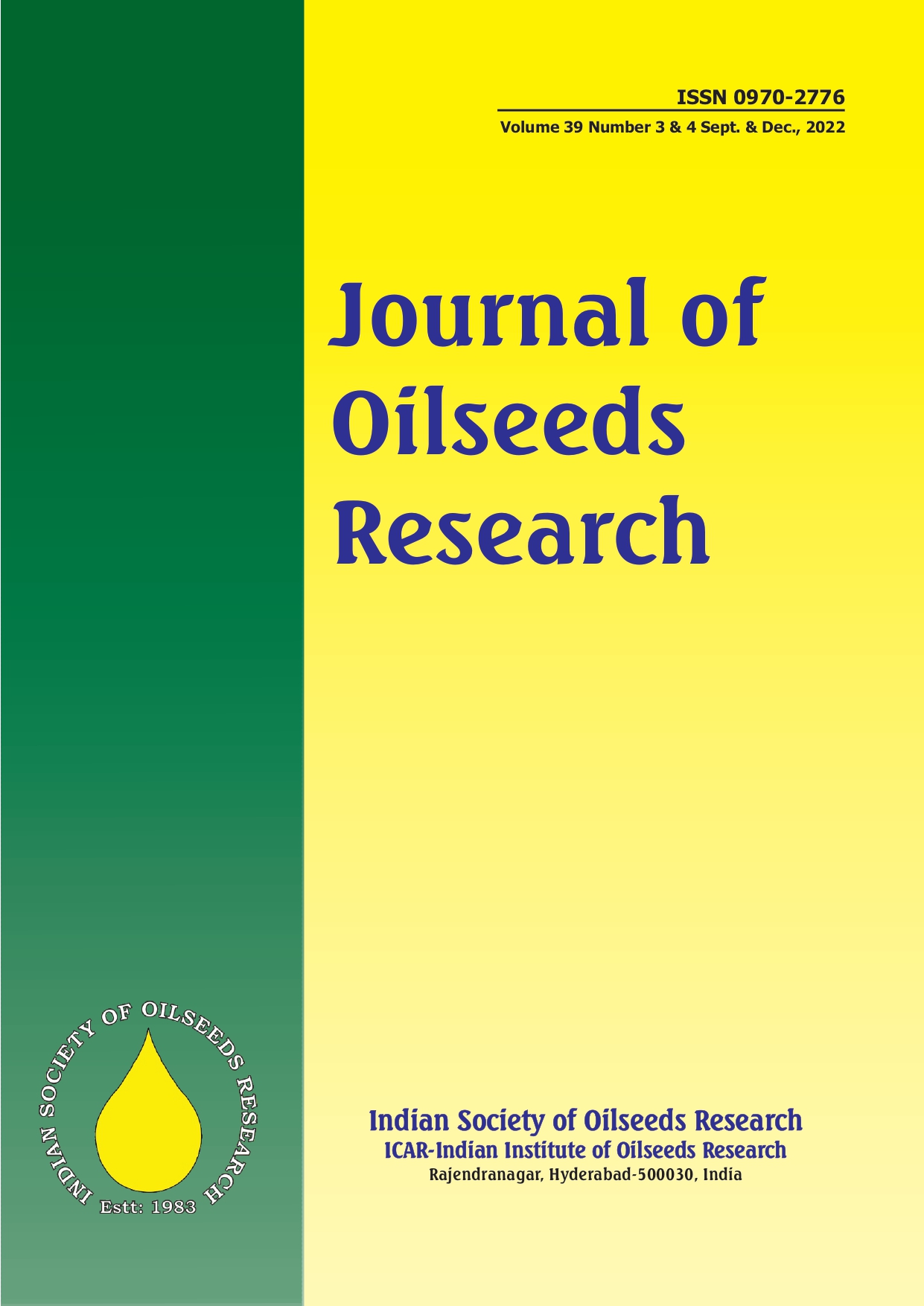Evaluation of suitable method of composting castor shell and stalk
EVALUATION OF SUITABLE METHOD OF COMPOSTING CASTOR SHELL AND STALK
163 / 1
Keywords:
Castor shell, Castor stalk, Compost, Micronutrients, Nutrient contentAbstract
The experiments on evaluating compostingmethod with differenttreatmentswere conducted for four consecutive years at the Castor-Mustard Research Station, S D Agricultural University, Sardarkrushinagar during 2018-21 the nutrient composition of composted castor shell and stalk were examined. The results indicated that composted fresh castor shell or shredded stalk compost (approx. 1000 kg) treated with cow dung (100 kg) + urea solution (4 kg/200 L water) + SSP (5 kg) along with microbial consortium @ 1 kg resulted in highest N, P, K content and micronutrient content (Fe, Mn, Zn and Cu). The cost of production of compost was ` 6.81 per kg of shell and ` 6.76 per kg stalk respectively.
Downloads
References
Agarwal R, Chaudhary M and Singh J 2015. Waste management initiatives in India for human wellbeing. European Scientific Journal, 11(10) 105-127.
Anonymus 2022. State- wise area, production and productivity of castor seeds in India, 2019-20 to 2021-22. The Solvent Extractors Association of India.
Jackson M L 1973. Soil chemical analysis. New Delhi: Prentice Hall of India Pvt. Ltd. 498p.
Livleen S, Satish D L, Indra M M, Archna S and Annapurna K 2016. Rural composting for improvement of soil health and sustainable agriculture. Agri Res & Tech: Open Access J. 1(5): 105-112.
Kakde S V 2017. Biodegradation of agricultural residues and oily waste, their effect on vegetable crop yield. International Journal of Science and Research, 6 (7): 681-687.
Patel D K, Patel D A, Patel J R and Patel K V 2021. Generation mean analysis for seed yield and its component traits in five crosses of castor (Ricinus communis L.). Journal of Oilseeds Research, 38(1): 25-36.
Ramaswamy J, Prasher S O, Patel R M, Hussain S A and Barrington S F 2010. The effect of composting on the degradation of a veterinary pharmaceutical. Bioresource Technology, 101(7): 2294-2299.
Salihu B Z, Gana A K and Apuyor B O 2014. Castor oil plant (Ricinus communis L.): Botany, ecology and uses.
International Journal of Science and Research, 5(6): 1333-1340.
Singh R K and Longkumer T E 2018. Compost: The black gold. Krishi Vigyan Kendra -Phek, ICAR - NRC on Mithun, Porba, Phek, Nagaland, 112p.
Shah S K, Patel C J, Rathore B S and Desai A G 2015. Evaluation of castor stem residues for cellulose and lignin content. International Journal of Agriculture, Environment & Biotechnology, 8:2, 331-334.
Varshney A C, Bhoi K L and Mehta B P 1987. Evaluation of crop residues of north Gujarat. Biological Wastes, 19 (3): 227-231.
Zhang J, Ying Y and Yao X 2019. Effects of turning frequency on the nutrients of Camellia oleifera shell co-compost with goat dung and evaluation of co-compost maturity. PLOS One, 14(9): e0222841.
